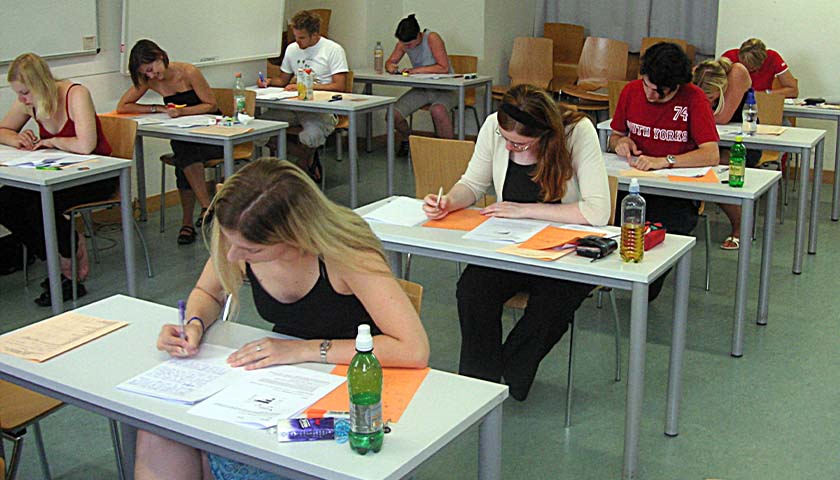by Neetu Arnold
Life has been very strange for millions of American college students this past month. Many packed their bags and moved back home to prevent further spread of the coronavirus. Universities scrambled to provide virtual classes to their students to help them comply with recommendations for social distancing. Our bustling campuses quickly turned into ghost towns, and university administrators redirected their full attention towards student instruction.
It seems we need a global pandemic to remind our university administrators that their first concern should be teaching students.
It shouldn’t take a pandemic. But far too many colleges spend enormous amounts of time and money on activities that have nothing to do with classroom instruction. Coronavirus cancellations catalog our colleges’ plethora of questionable on-campus events—programs for “understanding the lived experiences of DREAMers,” social justice workshops, body positivity workshops, and a staggering number more. Yet these canceled events are only the beginning of our higher education system’s bloat and waste—for which students’ exorbitant tuition foots the bill.
Why do American universities invest in so many ventures irrelevant to education? How do they benefit?
Colleges see students as cash cows, whom they need to corral so they can remain in business. Administrators must find ways to keep them on campus since schools lose tuition revenue when students drop out or transfer elsewhere. Above all, they work to retain first-year students.
They do so partly because schools with low graduation and retention rates do badly on college rankings, which, in turn, reduces the number of applicants. They also do so because accreditors demand that colleges work to retain students. Schools that lose accreditation status lose eligibility for federal student aid—and hence risk bankruptcy.
Colleges provide bizarre luxuries as part of their life-and-death struggle to retain first-year students. Administrators know that students frequently leave an institution if they don’t make friends, if the courses get too difficult, or if attendance becomes too expensive. Colleges, therefore, cater to students by offering country-club dorms, extra assistance for first-generation college students, mental health services, and easy access to federal student loans.
These amenities aren’t just wasteful. College “co-curriculum” administrators mix political propaganda and social justice activism with student programs, and thereby turn colleges into plush re-education camps. Social justice workshops double as bonding experiences for first-year students, advocacy that fulfills accreditors’ demands. Ideologue administrators tell their merely venal colleagues that such politicization is necessary for that vital sequence of retention, accreditation, and hard cash.
Colleges defend their decisions to spend on questionable amenities by saying that they are simply responding to student and family demands. And by now there may be some truth to this, since colleges, for a generation and more, have cultivated Americans to expect such amenities in their college “experience.” Colleges have successfully marketed themselves as a luxury good.
At a luxury cost—far beyond what most Americans can pay. But student loans provide the illusion that college remains affordable. So long as the government provides Americans easy access to student loans, colleges know they can continue to invest in superfluous activities and increase their prices with impunity.
America needs to realign regulatory and accreditation incentives so that universities return to their proper academic focus.
One college administrator I interviewed, as part of my research on student debt for the National Association of Scholars, pointed to the many regulations and accreditation standards that force colleges to emphasize priorities such as diversity and research above classroom instruction. We need to revisit these requirements, get rid of the red tape, and refocus accreditation on instructional quality.
Universities should also be held accountable for students who take out loans, but don’t graduate with a degree. Colleges should pay a portion of the loans and interest of every student who fails to graduate. This will force universities carefully to consider who they accept—and if they don’t accept underqualified students in the first place, they won’t need to worry nearly so much about retention. Colleges that only accept prepared students will be able to eliminate a vast amount of unnecessary services and amenities, justified now to forward “retention.”
The coronavirus crisis shows how far our higher education system has wandered from its academic roots. Our colleges focus on assuaging the superficial desires of as many students as possible, even if they are unprepared or not serious about their education. Activities dubbed as “educating the whole student” actually further propagandistic political agendas. These mistaken priorities only add to the financial burdens placed on students and families who are serious about attaining higher education.
The coronavirus emergency makes clear the needlessness of this mountain of wasteful college spending. That clarity allows us to see what parts of “the college experience” deserve to be quarantined—permanently.
– – –
Neetu Arnold is a research associate with the National Association of Scholars. Follow her on Twitter @neetu_arnold.






Thank you for shedding light on the racket called American Universities.
The answer is not offsite classes. The answer is getting back to the principle of educating people to be responsible and productive adults.